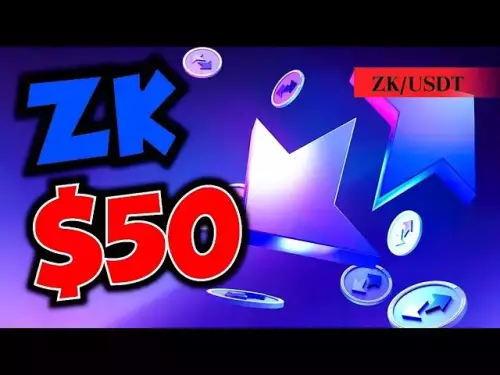-
 bitcoin
bitcoin $102967.750510 USD
1.70% -
 ethereum
ethereum $3398.656209 USD
3.88% -
 tether
tether $0.999949 USD
0.00% -
 xrp
xrp $2.332146 USD
5.85% -
 bnb
bnb $950.003742 USD
2.05% -
 solana
solana $160.959967 USD
4.14% -
 usd-coin
usd-coin $0.999774 USD
0.00% -
 tron
tron $0.288956 USD
1.74% -
 dogecoin
dogecoin $0.165842 USD
2.15% -
 cardano
cardano $0.539647 USD
3.64% -
 hyperliquid
hyperliquid $40.828509 USD
3.67% -
 chainlink
chainlink $15.017510 USD
2.87% -
 bitcoin-cash
bitcoin-cash $484.097556 USD
0.80% -
 ethena-usde
ethena-usde $0.999168 USD
0.00% -
 stellar
stellar $0.277403 USD
2.85%
블록 체인의 레이어 2 솔루션은 무엇이며 확장 성을 향상시키는 방법은 무엇입니까?
Layer 2 blockchain solutions, like state channels and rollups, alleviate Layer 1 limitations by processing transactions off-chain, thus increasing throughput and reducing fees.
2025/03/03 05:36
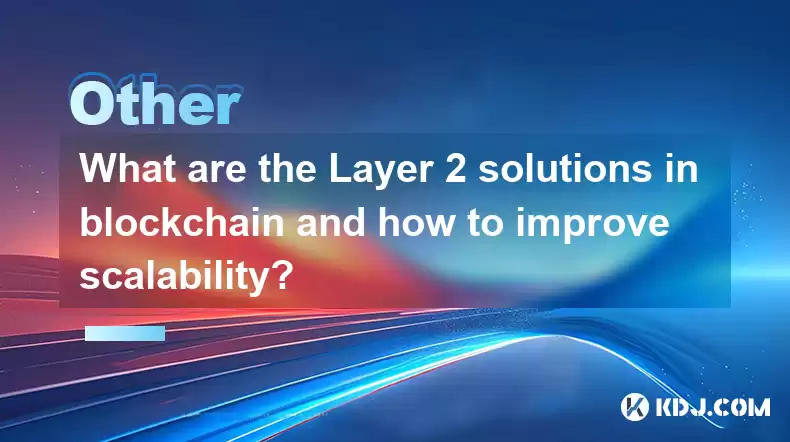
블록 체인의 레이어 2 솔루션은 무엇이며 확장 성을 향상시키는 방법은 무엇입니까?
핵심 사항 :
- 계층 1 및 계층 2 : Bitcoin 및 Ethereum과 같은 계층 1 블록 체인의 필요성은 블록 체인 네트워크의 핵심 기능을 처리합니다. 그러나 트랜잭션 처리량 및 처리 속도의 고유 한 제한은 종종 높은 거래 수수료와 네트워크 혼잡으로 이어집니다. 계층 2 솔루션은 일부 트랜잭션 처리를 메인 체인에서 이동시켜 이러한 확장 성 문제를 해결하도록 설계되었습니다.
- Layer 2 솔루션의 유형 : 상태 채널, 롤업 (낙관적 및 ZK-SNARKS), 사이드 체인 및 플라즈마를 포함한 몇 가지 저명한 계층 2 스케일링 솔루션을 탐색합니다. 각각은 보안, 탈 중앙화 및 복잡성 측면에서 다양한 트레이드 오프로 확장 성을 향상시키는 다른 접근법을 제공합니다.
- 계층 2의 확장 성 향상 : 각 계층 2 솔루션의 기술 메커니즘을 탐구하여 메인 체인의 부담을 완화하고 궁극적으로 거래 처리량을 증가시키고 수수료를 줄이는 방법을 설명합니다. 우리는 또한 계층 2 공간 내에서 진행중인 개발과 혁신에 대해 논의합니다.
- 올바른 계층 선택 2 솔루션 : 최적의 계층 2 솔루션은 특정 요구 사항과 우선 순위에 따라 다릅니다. 고려해야 할 요소에는 필요한 보안 수준, 원하는 분산 수준, 구현의 복잡성 및 지원되는 응용 프로그램 유형이 포함됩니다.
계층 2 솔루션 설명 :
- 상태 채널 :
반복적으로 스스로 거래하기를 원하는 사람들의 그룹을 상상해보십시오. 모든 단일 트랜잭션을 전체 네트워크로 브로드 캐스트하는 대신 (비싸고 레이어 1에서 느리게) 상태 채널을 열 수 있습니다. 이 채널은 참가자간에 거래가 기록되는 개인 오프 체인 원장처럼 작용합니다. 채널의 최종 상태 (모든 트랜잭션의 순 결과) 만 레이어 1 블록 체인에 기록됩니다. 이것은 메인 체인의 하중을 크게 줄입니다. 프로세스에는 여러 단계가 포함됩니다.
* **Channel Opening:** Participants agree to open a state channel and deposit funds into a multi-signature smart contract on the Layer 1 blockchain. This contract acts as an escrow, holding the funds until the channel is closed. The initial state of the channel is recorded, showing the initial balances of each participant. This requires a Layer 1 transaction, but it's a one-time cost. The smart contract's code is carefully audited to ensure its security and correctness, mitigating the risk of fraud. The selection of participants is crucial, and the initial state must be meticulously verified by all parties involved. The security of the entire channel relies on the correctness of the smart contract and the honest participation of all parties. Any vulnerabilities in the smart contract or malicious behavior by participants can compromise the security of the channel. The process also involves defining the rules and parameters of the channel, ensuring all participants agree on the terms of their interactions. The smart contract will enforce these rules, preventing any disputes that might arise due to ambiguous terms. A robust and well-defined set of rules is critical for the smooth and secure operation of the state channel. * **Transaction Processing:** Participants exchange funds within the channel by updating their shared state. These updates are not immediately broadcast to the main chain, significantly improving transaction speed and reducing fees. This off-chain processing allows for a high volume of transactions without burdening the main network. Each transaction is digitally signed by the participants to ensure authenticity and prevent unauthorized modifications. The use of cryptographic techniques guarantees the integrity and immutability of the transactions within the channel. The participants can use various methods to ensure the integrity of the channel, such as using a trusted execution environment or a secure multi-party computation protocol. This protects the transactions from tampering and ensures that only authorized participants can update the channel's state. * **Channel Closing:** Once the participants have finished transacting, they close the channel. The final state of the channel is broadcast to the Layer 1 blockchain as a single transaction. This transaction updates the balances of the participants on the main chain, reflecting the net result of all the off-chain transactions. The closing process involves submitting a signed transaction to the Layer 1 network. This transaction contains the final state of the channel, which is verified by the Layer 1 network. The verification process ensures the integrity of the channel and prevents any disputes about the final balances. The closing process might involve a waiting period to allow for challenges and dispute resolutions. Once the waiting period is over, the funds are released to the participants according to the final state of the channel.- 롤업 (낙관적 및 Zk-Snarks) :
롤업 롤업은 여러 트랜잭션을 계층 1의 단일 트랜잭션으로 묶습니다. 이는 주 체인이 처리 해야하는 개별 트랜잭션의 수를 크게 줄입니다. 두 가지 주요 유형이 있습니다.
* **Optimistic Rollups:** These assume that all transactions within a batch are valid unless proven otherwise. A "fraud proof" mechanism allows anyone to challenge a potentially invalid transaction within a specified time window. If a fraud is proven, the rollup is reverted. This mechanism relies on economic incentives to deter malicious actors from submitting fraudulent transactions. The longer the challenge period, the more secure the system, but it also means longer delays in finalizing transactions. The process involves several stages: * **Transaction Batching:** Transactions are collected off-chain into a batch. This batch is then submitted to the Layer 1 blockchain as a single transaction. The batch includes all the necessary information to reconstruct the transactions, such as the transaction data, the sender's addresses, and the receiver's addresses. The transaction data is usually encoded in a compact format to reduce the size of the batch. This process is optimized to minimize the size of the batch and reduce the gas costs associated with submitting the batch to the Layer 1 blockchain. A key aspect of this process is ensuring the security and integrity of the transaction batch. This is achieved through cryptographic techniques and validation mechanisms to prevent malicious actors from tampering with the batch. * **State Transition:** The rollup executes the transactions in the batch off-chain. This creates a new state root, which is a cryptographic hash representing the updated state of the rollup. The state root is then submitted to the Layer 1 blockchain as part of the transaction. The state transition process involves updating the balances of the accounts involved in the transactions. The process also involves verifying the validity of the transactions to ensure that they comply with the rules of the blockchain. Any invalid transactions are rejected, and the state transition is rolled back to the previous state. The state transition process is highly optimized to ensure that it can process a large number of transactions efficiently. * **Fraud Proof:** A challenge period is initiated, during which anyone can submit a fraud proof to challenge the validity of a transaction within the batch. If a fraud proof is provided, the rollup is reverted, and the fraudulent transaction is removed. The fraud proof mechanism relies on cryptographic techniques and consensus mechanisms to ensure the security and integrity of the system. The challenge period is typically set to a reasonable length to allow enough time for fraud proofs to be submitted, but it is also designed to prevent excessive delays in transaction finalization. The system provides incentives for individuals to participate in the fraud proof process, encouraging them to report fraudulent activities and maintain the integrity of the system. * **ZK-SNARK Rollups:** These use zero-knowledge proofs to prove the validity of transactions without revealing the transaction details. This provides greater privacy and faster finality compared to optimistic rollups, as there is no need for a challenge period. However, they are more complex to implement. * **Transaction Batching and Proof Generation:** Transactions are batched off-chain, and a succinct zero-knowledge proof is generated to attest to the validity of the entire batch. This proof is significantly smaller than the entire transaction data, allowing for efficient transmission to the Layer 1 blockchain. The process of generating zero-knowledge proofs involves complex cryptographic techniques, ensuring that the proof does not reveal any information about the transactions other than their validity. The computational cost of generating these proofs can be substantial, and the choice of cryptographic primitives is critical to balancing efficiency and security. The proof generation process is highly optimized to reduce the computational overhead and ensure the timely generation of proofs. * **Proof Verification on Layer 1:** The succinct zero-knowledge proof is submitted to the Layer 1 blockchain, along with the state root representing the updated state of the rollup. The Layer 1 network verifies the proof using a dedicated verifier contract. This verification process is significantly faster and cheaper than verifying each individual transaction. The verifier contract is carefully designed to ensure its security and efficiency. The verification process involves checking the validity of the proof and the consistency of the state root. The verifier contract only needs to process the small proof, rather than the entire batch of transactions, which significantly reduces the computational load on the Layer 1 blockchain. * **State Update:** Once the proof is verified, the Layer 1 blockchain updates its state according to the new state root, reflecting the outcome of the transactions in the batch. This process is atomic, meaning that either all transactions in the batch are applied, or none are. This ensures the consistency and integrity of the blockchain state. The state update process is highly optimized to ensure its efficiency and speed. The process also includes mechanisms to prevent race conditions and other potential issues that could compromise the integrity of the blockchain state.- 사이드 체인 :
사이드 체인은 메인 체인으로 짜여진 독립적 인 블록 체인입니다. 그들은 그들 자신의 합의 메커니즘과 매개 변수를 가질 수있어 유연성과 확장 성을 높일 수 있습니다. 그러나 그들은 일반적으로 주 사슬에 비해 어느 정도의 보안과 탈 중앙화를 희생합니다. 사이드 체인을 사용하는 과정에는 다음이 포함됩니다.
* **Pegging:** A secure mechanism is required to transfer assets between the main chain and the sidechain. This usually involves locking assets on the main chain and minting corresponding tokens on the sidechain, and vice-versa. This process ensures that the value of the assets is preserved across both chains. The security of the pegging mechanism is critical, as any vulnerabilities could lead to the loss of assets. The process often involves cryptographic techniques and multi-signature schemes to ensure the integrity and security of the transactions. The choice of cryptographic primitives is crucial to balancing security and efficiency. * **Transaction Processing:** Transactions are processed on the sidechain, taking advantage of its potentially higher throughput and lower fees. The sidechain can have its own consensus mechanism, allowing for faster transaction processing. The choice of consensus mechanism depends on the specific requirements of the sidechain, balancing factors such as security, decentralization, and throughput. Proof-of-stake and delegated proof-of-stake are popular choices for sidechains due to their efficiency and scalability. * **Data Availability:** The sidechain needs to provide a mechanism to ensure the availability of transaction data. This is crucial for ensuring that the transactions on the sidechain can be audited and verified. Different mechanisms can be used to ensure data availability, such as using a distributed hash table or a network of nodes. The choice of data availability mechanism depends on the specific requirements of the sidechain, balancing factors such as security, availability, and cost.- 혈장:
플라즈마는 부모 블록 체인 (종종 메인 체인)에 의해 확보 된 확장 가능한 어린이 블록 체인을 구축하기위한 프레임 워크입니다. 혈장 체인은 트랜잭션을 독립적으로 처리 할 수 있지만, 부모 체인은 분쟁의 최종 중재자 역할을합니다. 이 접근법은 확장 성과 보안 사이의 균형을 제공합니다. 구현에는 다음이 포함됩니다.
* **Child Chain Creation:** A child chain is created as a separate blockchain that operates independently from the main chain. This child chain can have its own consensus mechanism and parameters, allowing for higher throughput and lower fees. The creation process involves deploying a smart contract on the main chain that governs the rules and operations of the child chain. The smart contract is carefully audited to ensure its security and correctness. * **Transaction Processing:** Transactions are processed on the child chain, taking advantage of its potentially higher throughput and lower fees. The child chain can have its own consensus mechanism, allowing for faster transaction processing. The choice of consensus mechanism depends on the specific requirements of the child chain, balancing factors such as security, decentralization, and throughput. * **Exit Mechanism:** A mechanism is needed to allow users to withdraw their assets from the child chain to the main chain. This exit mechanism is crucial for ensuring that users can access their funds at any time. The exit mechanism usually involves a waiting period and a challenge period to allow for dispute resolution. The design of the exit mechanism is critical for balancing security and usability. A well-designed exit mechanism ensures that users can withdraw their funds quickly and securely without compromising the security of the system. The exit mechanism must be robust and resilient to attacks, and it must also be easy for users to understand and use.FAQ :
Q : 계층 1과 계층 2 솔루션의 차이점은 무엇입니까?
A : 계층 1은 기본 블록 체인 프로토콜 (예 : Ethereum, Bitcoin)을 나타냅니다. 합의, 보안 및 거래 검증과 같은 핵심 기능을 처리합니다. 레이어 2 솔루션은 외부 네트워크로 일부 처리를 오프로드하여 확장 성을 향상시키기 위해 계층 1 위에 구축됩니다. 계층 1은 최고의 보안과 최종의 원천으로 남아 있습니다.
Q : 어떤 계층 2 솔루션이 가장 좋습니까?
A : 단일 "최고의"레이어 2 솔루션이 없습니다. 이상적인 선택은 특정 애플리케이션의 요구, 보안, 탈 중앙화, 거래 속도 및 복잡성과 같은 요인의 우선 순위에 따라 다릅니다. 낙관적 롤업은 많은 응용 프로그램에 대한 균형을 제공하는 반면 ZK-SNARKS는 더 강력한 개인 정보 보호와 더 빠른 최종성을 제공하지만 더 복잡합니다. 스테이트 채널은 소그룹 간의 빈번한 거래를 위해 탁월한 반면, 사이체는 유연성을 제공하지만 탈 중앙화를 손상시킬 수 있습니다.
Q : 계층 2 솔루션은 확장 성을 어떻게 향상 시키는가?
A : 계층 2 솔루션은 오프 체인 트랜잭션을 처리하여 계층 1 블록 체인의 부담을 완화시킵니다. 이로 인해 트랜잭션 처리량이 증가하고 혼잡이 감소하며 거래 수수료가 낮아집니다. 이들은 배치 트랜잭션 (롤업), 개인 채널 생성 (주 채널) 또는 별도의 체인 (사이드 체인 및 플라즈마)과 같은 다양한 메커니즘을 통해이를 달성합니다.
Q : Layer 2 솔루션이 안전합니까?
A : 계층 2 솔루션의 보안은 특정 구현 및 기본 레이어 1 보안에 따라 다릅니다. 그들은 종종 확장 성을 향상 시키지만 새로운 취약점이나 종속성을 소개 할 수 있습니다. 그러나 많은 계층 2 솔루션에는 사기 증명 (낙관적 롤업) 또는 제로 지식 증명 (ZK-SNARKS)과 같은 강력한 보안 메커니즘이 통합되어 높은 수준의 보안을 유지합니다. 레이어 1 블록 체인의 보안은 레이어 2 솔루션의 전체 보안에서 중요한 요소로 남아 있습니다.
Q : 계층 2 솔루션의 한계는 무엇입니까?
A : 레이어 2 솔루션은 만병 통치약이 아닙니다. 구현 및 사용자 경험 측면에서 복잡성을 도입 할 수 있습니다. 일부 솔루션은 특정 기술 전문 지식을 설정하고 관리해야 할 수도 있습니다. 다른 사람들은 처리 할 수있는 거래 유형이나 그들이 제공 할 수있는 분산 수준에 제한이있을 수 있습니다. 또한, 계층 2 솔루션의 보안은 종종 기본 레이어 1 블록 체인의 보안에 의존합니다. 레이어 1 블록 체인의 타협은 그 위에 구축 된 레이어 2 솔루션의 보안에 잠재적으로 영향을 줄 수 있습니다. 일부 레이어 2 솔루션의 복잡성으로 인해 평균 사용자가 액세스 할 수 없을 정도로 채택을 제한 할 수 있습니다. 마지막으로, 서로 다른 솔루션이 다른 프로토콜과 표준을 사용할 수 있기 때문에 다른 계층 2 솔루션 사이의 상호 운용성은 여전히 어려운 일입니다.
이 자세한 설명은 cryptocurrency 공간에서 계층 2 스케일링 솔루션에 대한 포괄적 인 개요를 제공합니다. 이 분야는 끊임없이 발전하고 있으며 새로운 솔루션과 개선이 지속적으로 개발되고 있음을 기억하십시오.
부인 성명:info@kdj.com
제공된 정보는 거래 조언이 아닙니다. kdj.com은 이 기사에 제공된 정보를 기반으로 이루어진 투자에 대해 어떠한 책임도 지지 않습니다. 암호화폐는 변동성이 매우 높으므로 철저한 조사 후 신중하게 투자하는 것이 좋습니다!
본 웹사이트에 사용된 내용이 귀하의 저작권을 침해한다고 판단되는 경우, 즉시 당사(info@kdj.com)로 연락주시면 즉시 삭제하도록 하겠습니다.
- LBank에 MOTHER VEGETABLE(MVT) 토큰이 상장되었습니다: 녹색 암호화폐 보석?
- 2025-11-06 18:55:01
- Marathon Digital의 AI 중심점: 비트코인 채굴자에서 디지털 인프라 리더로?
- 2025-11-06 18:35:01
- Ripple, XRP 및 Private Giants: 400억 달러 규모의 파워 플레이
- 2025-11-06 18:55:01
- Finport 코인: 디지털 자산을 재정의하는 커뮤니티 중심 암호화 토큰
- 2025-11-06 19:00:01
- XRP 가격, 리플 펀딩, 마스터카드: 암호화폐 해독
- 2025-11-06 18:00:02
- Aster 가격 예측: 고래 움직임이 새로운 ATH를 암시할 수 있습니까?
- 2025-11-06 17:00:01
관련 지식

블록 탐색기란 무엇이며 어떻게 사용합니까?
2025-10-24 00:36:24
블록 탐색기란 무엇입니까? 1. 블록 탐색기는 사용자가 블록체인 네트워크의 데이터를 실시간으로 보고 분석할 수 있는 웹 기반 도구입니다. 이는 블록체인 거래, 주소, 블록 및 기타 온체인 활동에 대한 검색 엔진과 유사하게 작동합니다. 2. Bitcoin 또는 Ether...
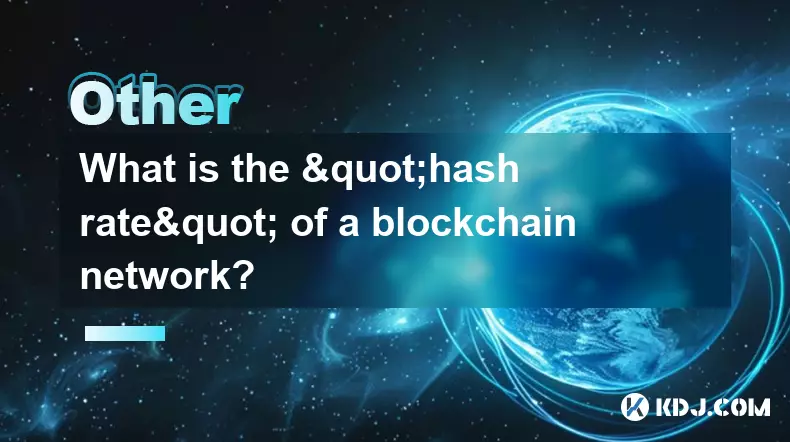
블록체인 네트워크의 "해시율"은 무엇입니까?
2025-10-10 15:55:04
블록체인 네트워크의 해시레이트 이해 1. 해시율은 특히 작업 증명(PoW) 합의 메커니즘을 활용하는 블록체인 네트워크에서 트랜잭션을 처리하고 새 블록을 채굴하는 데 사용되는 총 계산 능력을 나타냅니다. 거래를 검증하는 데 필요한 복잡한 암호화 퍼즐을 풀 때 채굴 장치 ...
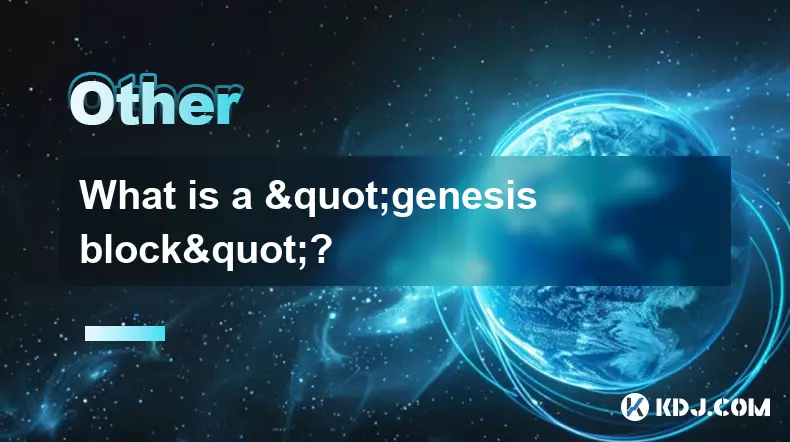
"제네시스 블록"이란 무엇입니까?
2025-10-15 19:55:08
암호화폐의 제네시스 블록 이해 제네시스 블록은 블록체인 네트워크의 첫 번째 블록입니다. 이는 모든 후속 블록이 구축되는 기초 역할을 합니다. 일반 블록과 달리 제네시스 블록은 선행 블록이 없기 때문에 이전 블록을 참조하지 않습니다. 이 독특한 특성은 전체 체인의 불변의...
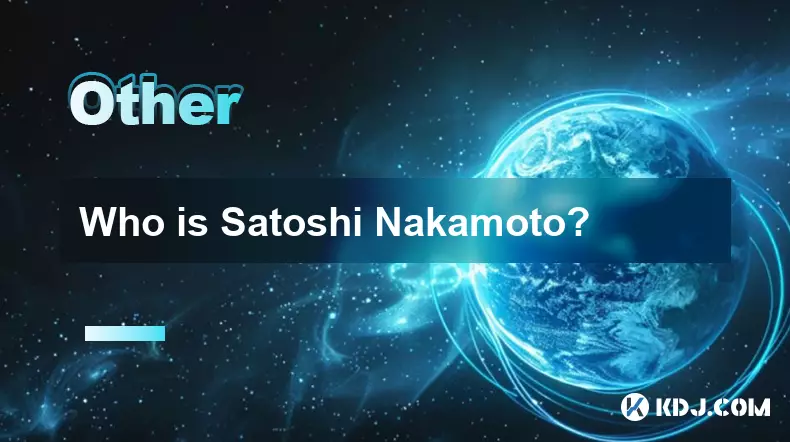
나카모토 사토시는 누구인가?
2025-10-15 13:01:02
나카모토 사토시는 누구인가? 1. 사토시 나카모토(Satoshi Nakamoto)는 최초의 분산형 암호화폐인 Bitcoin를 창안한 가명 개인 또는 그룹입니다. 이 이름은 중앙 당국에 의존하지 않고 금융 거래를 수행하는 혁신적인 방법을 설명하는 'Bitcoin:...

블록체인 기술은 실제로 어떻게 작동하나요?
2025-10-11 14:36:32
블록체인의 핵심 메커니즘 이해 1. 기본적으로 블록체인은 등록된 거래를 소급하여 변경할 수 없는 방식으로 여러 컴퓨터에 걸쳐 거래를 기록하는 분산형 디지털 원장입니다. 이는 중앙 기관 없이도 투명성과 보안을 보장합니다. 2. 체인의 각 블록에는 거래 목록, 타임스탬프 ...
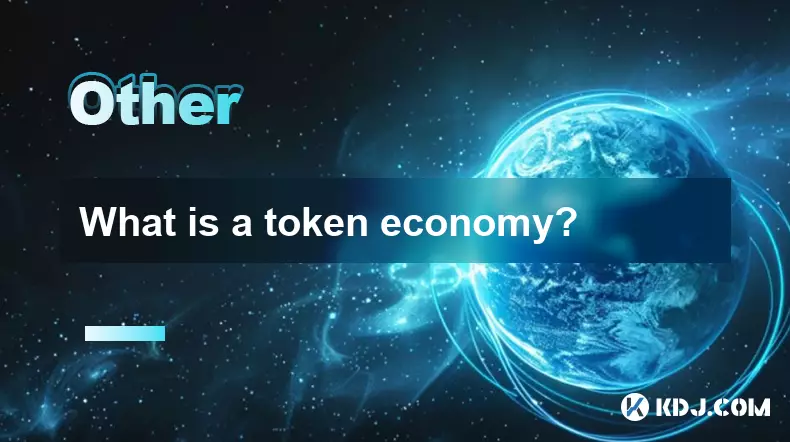
토큰 경제는 무엇입니까?
2025-09-20 00:18:29
토큰 경제의 기초를 이해합니다 1. cryptocurrency의 맥락에서 토큰 경제는 디지털 토큰이 블록 체인 기반 생태계 내에서 특정 행동을 주도하는 인센티브로 사용되는 시스템을 말합니다. 이 토큰은 일반적으로 분산 된 네트워크에 구축되며 가치, 액세스 또는 유틸리티...

블록 탐색기란 무엇이며 어떻게 사용합니까?
2025-10-24 00:36:24
블록 탐색기란 무엇입니까? 1. 블록 탐색기는 사용자가 블록체인 네트워크의 데이터를 실시간으로 보고 분석할 수 있는 웹 기반 도구입니다. 이는 블록체인 거래, 주소, 블록 및 기타 온체인 활동에 대한 검색 엔진과 유사하게 작동합니다. 2. Bitcoin 또는 Ether...

블록체인 네트워크의 "해시율"은 무엇입니까?
2025-10-10 15:55:04
블록체인 네트워크의 해시레이트 이해 1. 해시율은 특히 작업 증명(PoW) 합의 메커니즘을 활용하는 블록체인 네트워크에서 트랜잭션을 처리하고 새 블록을 채굴하는 데 사용되는 총 계산 능력을 나타냅니다. 거래를 검증하는 데 필요한 복잡한 암호화 퍼즐을 풀 때 채굴 장치 ...

"제네시스 블록"이란 무엇입니까?
2025-10-15 19:55:08
암호화폐의 제네시스 블록 이해 제네시스 블록은 블록체인 네트워크의 첫 번째 블록입니다. 이는 모든 후속 블록이 구축되는 기초 역할을 합니다. 일반 블록과 달리 제네시스 블록은 선행 블록이 없기 때문에 이전 블록을 참조하지 않습니다. 이 독특한 특성은 전체 체인의 불변의...

나카모토 사토시는 누구인가?
2025-10-15 13:01:02
나카모토 사토시는 누구인가? 1. 사토시 나카모토(Satoshi Nakamoto)는 최초의 분산형 암호화폐인 Bitcoin를 창안한 가명 개인 또는 그룹입니다. 이 이름은 중앙 당국에 의존하지 않고 금융 거래를 수행하는 혁신적인 방법을 설명하는 'Bitcoin:...

블록체인 기술은 실제로 어떻게 작동하나요?
2025-10-11 14:36:32
블록체인의 핵심 메커니즘 이해 1. 기본적으로 블록체인은 등록된 거래를 소급하여 변경할 수 없는 방식으로 여러 컴퓨터에 걸쳐 거래를 기록하는 분산형 디지털 원장입니다. 이는 중앙 기관 없이도 투명성과 보안을 보장합니다. 2. 체인의 각 블록에는 거래 목록, 타임스탬프 ...

토큰 경제는 무엇입니까?
2025-09-20 00:18:29
토큰 경제의 기초를 이해합니다 1. cryptocurrency의 맥락에서 토큰 경제는 디지털 토큰이 블록 체인 기반 생태계 내에서 특정 행동을 주도하는 인센티브로 사용되는 시스템을 말합니다. 이 토큰은 일반적으로 분산 된 네트워크에 구축되며 가치, 액세스 또는 유틸리티...
모든 기사 보기























![[4K 60fps] DTMaster09의 Morcee(코인 1개) [4K 60fps] DTMaster09의 Morcee(코인 1개)](/uploads/2025/11/06/cryptocurrencies-news/videos/690bf31847bc1_image_500_375.webp)

